#jorge mistral
Explore tagged Tumblr posts
Text

Carmen Sevilla-Jorge Mistral "La venganza" 1958, de Juan Antonio Bardem.
5 notes
·
View notes
Text

Spanish actor, director and screenwriter Jorge Mistral

12 notes
·
View notes
Text



Sara Montiel & Jorge Mistral
Locura de Amor 1948
Pequeñeces 1950
Carmen la de Ronda 1959
6 notes
·
View notes
Text
Thinking Aloud About Film: Stronger Than Love/ Más fuerte que el amor (Cuba/ Mexico, Tulio Demicheli, 1955)
Another fascinating film showing on MUBI; part of the ‘Spectacle Every Day: The Many Seasons of Mexican Cinema’ program; a lurid and very entertaining melodrama; interesting to compare with its contemporary Hollywood variant but perhaps best seen as an example of Spanish speaking transnational cinema. The director Tulio Demicheli is from Argentina, Jorge Mistral is Spanish, Miroslava originates…

View On WordPress
#Cuban co-productions#Jorge Mistral#Mexican Cinema#Miroslava#Spectacle Every Day: The Many Seasons of Mexican Cinema#Tulio Demicheli
0 notes
Text


[Image description: Two digital drawings. The first features Temenos Mistral and Aelfric in a medieval-style composition. The second features Kaldena and Temenos posing together in a study. There are full descriptions of both drawings under the cut. End image description.]
godsbride / goodwife
happy birthday @maverickflare <3
[Image description: In the first drawing, Aelfric sits on his stone pedestal outside the Flamechurch Cathedral at night. He wears a flowing white dress, a black long-sleeved undergarment, and a teal cloak. He also wears a gold belt and bracelet, and the medallion on his cloak depicts the Sacred Flame. His face is almost entirely eclipsed by a shining white halo; only the outlines of his narrowed eye, lofty smile, and long, curly hair can be seen. In one of his hands burns a blue flame, while the other hand cradles Temenos Mistral's face. Temenos looks up at Aelfric with an expression of dread and reverence, sweat beading on his cheek. The illustration has a border of gold and lapis lazuli that includes medallions at its corners and midpoints, which depict various other characters. At the top center is Crick Wellsley, holding up a red book so that it covers the lower half of his face; he looks directly at the viewer with a shadow over his eyes. On either side of him, as well as at the bottom center, are three angels with shackles around their necks. They smile placidly and hold their hands up in supplication as they gaze at Crick. At the middle left is Pontiff Jörg, looking tiredly off to the side. At the middle right is Roi Mistral, looking downwards with a troubled expression. All of them are drawn with blue haloes. The bottom left medallion shows Aelfric's hand reaching around Temenos's neck; his eyes are hidden, his face is flushed, and his mouth is slightly open. The bottom right medallion is shattered. Between each medallion, a poem is written in Orsterran script and framed by arabesques. The red background beyond the border, decorated with eight black, winged, haloed Sacred Flames, completes the poem. It reads: "THE FACE OF MY LORD / is a devouring fire / THE FACE OF MY LORD / is a destroying angel / THE FACE OF MY LORD / disturbs slumberers in the night / THE FACE OF MY LORD / menaces children at church / THE FACE OF MY LORD / does not appear / THE FACE OF MY LORD / cannot appear / THE FACE OF MY LORD / is a wreath of tears / THE FACE OF MY LORD / is a broken mirror"
In the second drawing, Kalenda sits at a desk in an intricately carved wooden chair. She wears a plum-purple tailcoat, wine-red waistcoat with a dotted pattern, black trousers, and a white shirt with ruffles at the wrist and a black ribbon at the collar. On her left hand, she wears three silver rings; on her right hand, she wears a gold ring on her ring finger. A flower-decorated bowl holding a pomegranate, plum, and grapes sits on her desk. In her right hand is a lychee. Temenos stands behind her, bracing his left hand on the chair and resting the other playfully on Kaldena's head, seemingly reaching for the lychee. He wears a white shirt, black waistcoat, yellow-green waistscarf, and teal trousers which are heavily embroidered with nature imagery. He also wears a pearl earring; a matching gold ring on his right ring finger; and a gold necklace with a pendant of Crick, who is haloed and holding his right hand up in a gesture of blessing. Kaldena and Temenos are both looking at the viewer and smiling. The simplistic background shows an entrance to another room as well as a tall bookcase, with the top shelf holding a vase and two figurines of a griffin and winged serpent. End image description.]
#octopath traveler#temenos mistral#aelfric flamebringer#crick wellsley#pontiff jorg#roi mistral#captain kaldena#drawings#works cited: illustration from the 11th century mont-saint-michel sacramentary (for the border composition mostly)#and the william hogarth painting david garrick with his wife eva-maria veigel#temenos being dressed as a dancer there is incidental rly. was looking for 18th century euro clothing and found this french outfit that#looked almost EXACTLY like his dancer outfit just without the waistcoat so i was like why not lol#for context they are lavender married btw. and YES temenos is the wife.
83 notes
·
View notes
Text
La Lectura Cambia Vidas | Hoy Es Dia Internacional Del Libro! | ¿Cuál Me Recomiendas? | ¿Recuerdas Cuál Fue El Primer Libro Que Leiste?
“Hay quienes no pueden imaginar un mundo sin pájaros, hay quienes no puedan imaginar un mundo sin agua; en lo que a mí se refiere, soy incapaz de imaginar un mundo sin libros.” – Jorge Luis Borges 📚 Conmemoramos el Día Internacional del Libro y el Derecho de Autor recordando las palabras de Gabriela Mistral: "Hacer leer, como se come, todos los días, hasta que la lectura sea, como el mirar, un…

View On WordPress
#autor#Cervantes#Dia Internacional Del Libro#Gabriela Mistral#Jorge Luis Borges#lector#lectura#libro#Shakespeare
0 notes
Text
IDA VITALE CUMPLE CIEN AÑOS
EUFEMÉRIDES La poeta Ida Vitale, Premio Cervantes en 2018, cumple un siglo de vida en plenas facultades Francisco R. Pastoriza El abuelo paterno de Ida Vitale, Félix Vitale D’Amico, llegó a Uruguay desde Sicilia después de un viaje terrible en un barco destartalado. Había participado en las guerras de unificación de Italia formando parte de las brigadas de Garibaldi, y llegó…

View On WordPress
#Ángel Rama#Enrique Fierro#Gabriela Mistral#Ida Vitale#Jorge Ibargüengoitia#José Bergamín#Juan Carlos Onetti#Juan Ramón Jiménez#León Felipe#Manuel Scorza#María Inés Arrillaga#Mario Benedetti#Marta Traba#Octavio Paz
0 notes
Text
Selected Poems of Gabriela Mistral, translated by Ursula K. Le Guin
Winning the Nobel Prize in Literature is generally regarded as a great honour. But the prize was never awarded to authors such as Leo Tolstoy, Henry James, Anton Chekhov, Mark Twain, Henrik Ibsen, Marcel Proust, James Joyce, Jorge Luis Borges and Vladimir Nabokov. On the other hand, how many people still read the works of Sully Prudhomme (first Nobel Prize for Literature in 1901), Giosuè Carducci (1906), Verner von Heidenstam (1916), Frans Eemil Sillanpää (1939) or Johannes Vilhelm Jensen (1944)?
Gabriela Mistral was the first Latin American author to receive the Nobel Prize in Literature, but when Literature Stack Exchange suggested a Gabriela Mistral reading challenge, I had to overcome my prejudice against what seemed one of those long forgotten Nobel laureates. It helped that Ursula K. Le Guin had published a large selection of Mistral’s poems with her own English translations in 2003. Even though Le Guin is best known for her science fiction and fantasy novels, she was also a poet. This volume, published by the University of New Mexico Press, is the largest selection of Mistral’s poems ever published in English and fills the gap left by earlier translations, by Langston Hughes (1957) and Doris Dana (1971), which have gone out of print.
Le Guin selected poems from five of Mistral’s published volumes: Desolación (1922), Ternura: canciones de niños (1924), Tala (1938), Lagar (1954) and the posthumously published Poema de Chile (1967). She also included four unpublished poems. The Spanish text and Le Guin’s translation are usually printed on facing pages, except when the lines are short enough to print both text side by side on the same page. Le Guin did not attempt to reproduce the metre and only reproduced the rhyme if it came without forcing. She also included some of the dark, difficult poems from Mistral’s last two books, but the admits that the choice was otherwise subjective.
Le Guin’s translations capture the spirit of Mistral’s poems very well. In order to achieve this, the translations can’t always be literal. Sometimes, it even seems as if Le Guin is taking liberties, for example when she translates estanque as millpond (in “El amor que calla”, pages 12–13) or al roce del cilicio as at the touch of the lash (in “Íntima”, pages 14–15) or “Habla con dejo” (literally: “[She] speaks with [an] accent”) as “She chatters” (in “La extranjera”, pages 192–193).
Mistral’s work is influenced by her Catholicism, which is reflected both in some of the poems’ themes and in metaphors, even in poems that are not religious. That does not mean you need to be religious to appreciate her poetry.
The book would have benefited from more careful editing and proofreading, especially the first part. Typographical errors include “I stretched our my arms” (page 29), “a mis casa” and “infinto” (both in the second stanza of “Desolación”, page 40) and “Roció” (the title of the poem “Rocío”, page 57).
Gabriela Mistral: Selected Poems of Gabriela Mistral. Translated by Ursula K. Le Guin. Mary Burritt Christiansen Poetry Series. University of New Mexico Press, 2003 (431 pages). ISBN 9780826328199.
Review submitted by Tsundoku.
2 notes
·
View notes
Text

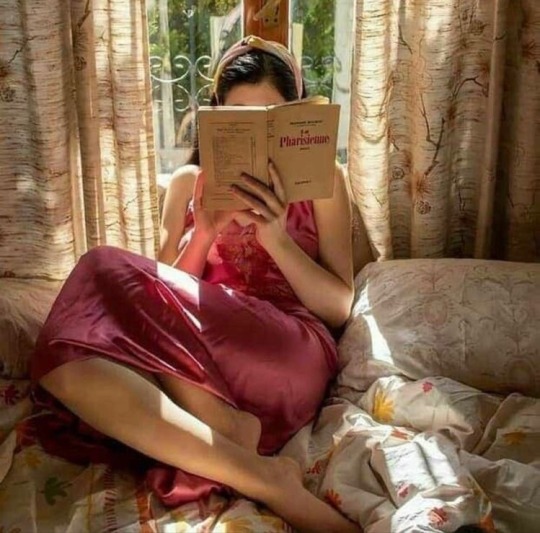
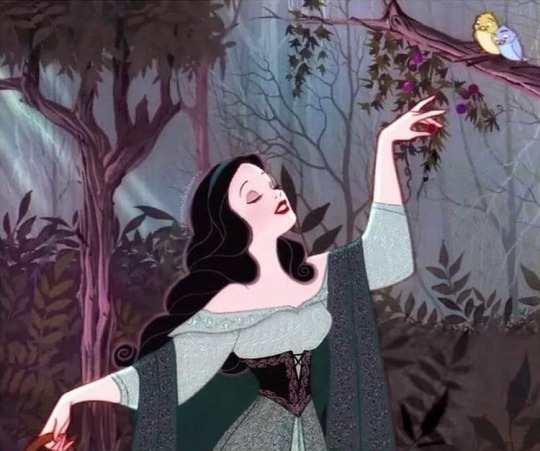
Reading List - Lista para Leer
Aves sin nido Clorinda Matto de Turner
Dom Casmurro Joaquim Maria Machado de Assis
Ariel José Enrique Rodó
El Moto Joaquin Garcia Monge
La amada inmóvil Amado Nervo
Desolación Gabriela Mistral
La señorita Etcétera Arqueles Vela
La vorágine José Eustasio Rivera
Doña Bárbara Rómulo Gallegos
Cuentos de Amor, de Locura y de Muerte Horacio Quiroga
Other selected works
Isabel Allende, “Dos palabras”
Anónimo, “Romance de la pérdida de Alhama”
Anónimo, Lazarillo de Tormes (Prólogo; Tratados 1, 2, 3, 7)
Gustavo Adolfo Bécquer, Rima LIII (“Volverán las oscuras golondrinas”)
Jorge Luis Borges, “Borges y yo”
Jorge Luis Borges, “El Sur”
Julia de Burgos, “A Julia de Burgos”
Miguel de Cervantes, Don Quijote (Primera parte, capítulos 1–5, 8 y 9; Segunda parte, capítulo 74)
Julio Cortázar, “La noche boca arriba”
Hernán Cortés, “Segunda carta de relación” (selecciones)
Sor Juana Inés de la Cruz, “Hombres necios que acusáis”
Rubén Darío, “A Roosevelt”
Don Juan Manuel, Conde Lucanor, Exemplo XXXV (“De lo que aconteció a un mozo que casó con una mujer muy fuerte y muy brava”)
Osvaldo Dragún, El hombre que se convirtió en perro
Carlos Fuentes, “Chac Mool”
Federico García Lorca, La casa de Bernarda Alba
Federico García Lorca, “Prendimiento de Antoñito el Camborio en el camino de Sevilla”
Gabriel García Márquez, “El ahogado más hermoso del mundo”
Gabriel García Márquez, “La siesta del martes”
Garcilaso de la Vega, Soneto XXIII (“En tanto que de rosa y azucena”)
Luis de Góngora, Soneto CLXVI (“Mientras por competir con tu cabello”)
Nicolás Guillén, “Balada de los dos abuelos”
José María Heredia, “En una tempestad”
Miguel León-Portilla, Visión de los vencidos (dos secciones: “Los presagios, según los informantes de Sahagún” y “Se ha perdido el pueblo mexica”)
Antonio Machado, “He andado muchos caminos”
José Martí, “Nuestra América”
Rosa Montero, “Como la vida misma”
Nancy Morejón, “Mujer negra”
Pablo Neruda, “Walking around”
Emilia Pardo Bazán, “Las medias rojas”
Francisco de Quevedo, Salmo XVII (“Miré los muros de la patria mía”)
Horacio Quiroga, “El hijo”
Tomás Rivera, . . . y no se lo tragó la tierra (dos capítulos: “... y no se lo tragó la tierra” y “La noche buena”)
Juan Rulfo, “No oyes ladrar los perros”
Alfonsina Storni, “Peso ancestral”
Tirso de Molina, El burlador de Sevilla y convidado de piedra
Sabine Ulibarrí, “Mi caballo mago”
Miguel de Unamuno, San Manuel Bueno, mártir

#lista para leer#catholic#feminine#reading list#Spanish reading list#spanish#reading#books to read#classic books
7 notes
·
View notes
Text
All the books, poems and plays I studied for my undergrad degree
NB. I wasn't a literature major, or even a Hispanic Literature or French Literature major. These books just parts of units that I did for my degree. I studied all the works here in their original language i.e. in Spanish or French, so their English translations might be more well known.
Huis clos by Jean-Paul Sartre
Candide by Voltaire
L'école des femmes by Molière
La casa de Bernada Alba by Federico García Lorca
Le Voyeur by Alain Robbe-Grillet
En attendant Godot by Samuel Beckett
El burlador de Sevilla by Tirso de Molina
Don Juan Tenorio by José Zorrilla
El solitario en octubre by Emilio Carballido
La fiesta del chivo by Mario Vargas Llosa
El laberinto de la soledad by Octavio Paz
Selected poems and works by Charles Baudelaire, Paul Verlaine, Gabriela Mistral, NourBese Philip, Gustavo Adolfo Bécquer, Jorge Luis Borges, and Gabriel García Márquez
8 notes
·
View notes
Text
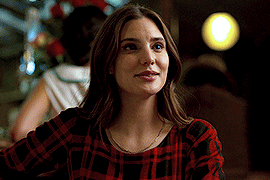
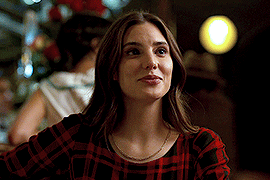
is that MACARENA ACHAGA ? oh, no, that’s MARISA IRIGARAY, a TWENTY-NINE year old SALES ASSOCIATE AT INHERITED ESCAPES AND ASPIRING POET who uses SHE/HER pronouns. they currently live in CASABLANCA, and the character they identify with most is PENNY LANE FROM ALMOST FAMOUS. hopefully they find their own little paradise here in el país de los poetas!

//:: T H E B A S I C S
name: maria isabel irigaray lombardi
nickname(s): marisa
age: twenty-nine
gender: cis woman
place of birth: colonia, uruguay
birthday: march 14th, 1994
zodiac : pisces sun, capricorn moon and leo rising
height: 5′7″
occupation: sales associate at inherited escapes and aspiring poet
//:: T H E B I O G R A P H Y
tw: abandonment
maria isabel "marisa" irigaray was born in colonia, uruguay, and spent the initial five years of her life there before her family relocated to montevideo. born into a family with a banker father and a receptionist mother, marisa's upbringing was shaped by her parents sacrificing their dream careers for a more secure livelihood. while her father came to terms with the curtailment of his musical aspirations, her mother, an aspiring painter, struggled to move past the relinquishment of her artistic dreams. over time, her mother harbored resentment towards her husband and children for the role they played in truncating her ambitions.
despite her mother's usual cold and distant demeanor, there were instances when, under the influence of alcohol, she would engage in lengthy conversations with marisa about the profound significance of art. ironically, these intoxicated moments with her mother ignited a curiosity for art within marisa. she experimented with various forms, including painting, singing, and sculpting, but ultimately discovered her true calling in the realm of words.
at the age of eight, marisa's mother reached a breaking point and chose to abandon the family. devastated by this abandonment, marisa's father, though successful in providing a comfortable life financially, became immersed in work and frequently neglected his two children emotionally.
at 18, she attended university, majoring in literature. it was in her junior year that she seized the opportunity to spend a semester as an exchange student in valparaiso. it was during this time that marisa developed a deep affection for the city and vowed to return someday.
after completing her studies back in uruguay, she graduated and worked as a teacher for a few years. simultaneously, she dedicated her free time to crafting poems and actively sought a publishing house for her work.
one year ago, she made the bold decision to relocate to valparaiso. opting for a less demanding job than teaching, she sought a position at a bookstore, allowing her more time for writing. embracing a modest lifestyle, she now resides in the city.
//:: H E A D C A N O N S
marisa holds a special affinity for mario benedetti's "la tregua," making it her favorite book. additionally, she admires the works of horacio quiroga and jorge luis borges. among her preferred poets are gabriela mistral, rosario castellanos, sylvia plath, and pablo neruda.
influenced by her father's musical tastes, marisa grew up immersed in spanish rock, with a particular fondness for bands like soda stereo, héroes del silencio, and caifanes.
her upbringing also instilled in her a love for cooking, a skill passed down by her mother from their italian immigrant roots. marisa takes pride in her ability to prepare homemade pasta, with cannelloni being her signature dish.
her early education included attending an italian school, but her proficiency in the language has diminished over time since her mother's abandonment. despite being a bit rusty, she still retains some knowledge of italian.
while marisa often mentions "before sunrise" as one of her top 5 favorite movies, her true favorite is "mamma mia!"
unbeknownst to many, she harbors a fear of water due to a childhood accident at the age of five, which prevented her from learning how to swim. she keeps this detail private, sharing it with only a few people.
5 notes
·
View notes
Text

Carmen Sevilla-Jorge Mistral "Un caballero andaluz" 1954, de Luis Lucia.
8 notes
·
View notes
Note
Temenos Mistral for the character ask game! (Because you were talking about them earlier!)
First impression: "Oh, he seems neat, wonder what his story will be about."
Impression now: I love Temenos, one of my top favorite characters from the game, probably my scond-fave after Ochette. He's such an interesting character and his story (gripes I might have with the pacing aside) was unexpected for a "cleric" story, based on what I'd seen with Ophilia and some of the clerics from CotC. Honestly I'd write up an entire character analysis if I had the energy to do so, bc there is so much going on with him.
Favorite moment: A few different ones, but I really like how any time that the façade he puts up starts to slip, this sheer force of anger slips through--that's good stuff. Love that his "In Pursuit of Truth" theme also sounds much more energetic and aggressive when compared to his normal theme song (and like, I'm not well-versed with music terms and stuff, but Temenos is also the only character whose "In Pursuit of..." song has a significantly different tempo and more aggressive melody when compared to the standard theme, if I recall correctly).
Idea for a story: Hmm, do the two rewrite ideas of his main narrative that I have floating in my head count? Like I've said, something about the general pacing of events and a handful of narrative elements in his story don't really work for me, and as a result his story arc doesn't seem as strong compared to the others' stories. Not all of it is "bad writing" or anything, like the writers clearly had a plan in mind, and I know some of it is just my personal taste...but yeah, I have a "canon compliant, trying to match the general narrative motifs and themes of the rest of the characters" rewrite idea, and a "mostly canon compliant, but definitely changing some things to fit my personal tastes which therefore go against one or two of the overall recurring themes and motifs" rewrite idea. I'll probably never do anything with them though bc it's more like...anytime I come across story writing that I thought was really good, I try to figure out what about it I liked and how the writers set it up, and any time I come across story writing that doesn't work, I do the same thing where I try to figure out why I didn't like it and then try to figure out how I'd write it myself, and this is like, a little mental enrichment I do just for fun and also to try and sharpen my own preferences and sensibilities for storytelling and writing. So like, I don't technically have that much beef with his story, and I don't want to come off as "I'm a better writer than the original writers" or even that I thought the original arc was bad (it really wasn't bad writing per se), it's more just a thing I came up with for myself for funsies and as a mental exercise in narrative, more so than an actual like, critique of the original story.
Unpopular opinion: I uh, I don't ship him with Crick...or anyone actually. In fact the Temenos x Crick ship really does not float my goats (nothing against anyone who enjoys the ship, you do you and all that, it's just not my cup of tea). I actually read and more or less headcanon Temenos as aroace, and even if I didn't, he's got like 2934820398432 unresolved trust issues, so I'd have a hard time seeing him be able to enter into a romantic relationship anyhow. But that's just my reading, again no shade to anyone who has a different reading/headcanons.
Favorite relationship: I love his interactions with all the other main characters, but I find his weird friendship with Ochette to be really, really interesting especially (I'd write up an analysis and list of thoughts on this too if I had the energy). Outside of the main cast, what little we get to see of his interactions with Jorg, along with what we learn after Jorg gets murdered, is really fascinating to me as well. They have a very unusual familial/professional relationship (although given that Benedict and Anna's wildly unconventional familial relationship is also super interesting to me, I'm thinking I might just be an enjoyer of unconventional and murky adopted familial relationships in fiction).
Favorite headcanon: I am fond of the idea of him being related to Alpates and Throne by blood, although as I've turned the headcanon over in my head and whittled it like a wood carving, it's developed into something really specific with basically no in-game source to back it up, so it's a 100% bona fide "I just made something up and went with it" headcanon that I keep modifying and changing. Basically, I think he's got a situation similar to Hikari's, but significantly more subdued since he doesn't have an evil shadow version of himself trying to talk him into murdering everyone, and that his blood ties to Alpates's bloodline are stronger than his blood ties to D'arqest. Some more specifics about that under the cut bc explaining myself requires talking about late-game spoilers.
(Specifically rather than being directly Claude's son, I think it's entirely possible some of the Blacksnakes were able to have kids of their own, like Father did, without Claude finding out about them and having the child killed, and that even potentially those kids might have had kids, thinning the blood ties to Claude further--so rather than being Throne's half-sibling, Temenos would be more uh...*checks cheat-sheet chart for familial ties* ummm...her half-grand-nephew, god I hate everything about that phrase why does anything relating to Claude have to be a string of "wtf??"s). I keep changing this headcanon slightly (I did originally start from the base of having him and Throne as half-siblings), so who knows just how much it's gonna change before I settle on something I'm really happy with, but I do like the idea a lot.
#sdlfkja;slfdjasd sorry for posting early I keep forgetting there's a keyboard shortcut for posting a post#anyhow I heacanond the majority of the Octopath characters (both games) as some variation of ace#which is why my ''Temenos reads as aroace to me'' headcanon isn't my Favorite headcanon for him#bc it's like...my headcanon for over half the main cast#anywhos yeah#love my dude Temenos he's great I don't talk about it but I love this guy so much#thanks for letting me rant about The Guy#youcantencryptyourface#ask game#I still don't have an ask tag
3 notes
·
View notes
Text
LITERATURA COLONIAL DE CHILE
¿COMO ERA EL ORIGEN DE CHILE?
Los restos arqueológicos mas antiguos de chile continental han sido ubicados en monte verde a finales del paleolítico superior, convirtiéndolo en el primer asentamiento humano conocido en américa en este periodo descolló la cultura chinchorro, desarrollaba en el norte del pais entre 5.000 y 1.700 A.C.
¿COMO ERA LA LITERATURA EN CHILE?
La literatura de Chile hace mención al conjunto de producciones literarias creadas por escritores originarios de ese país; ha sido producida habitualmente en español, aunque existen también autores, principalmente poetas, que utilizan otros idiomas, en particular el mapudungun. Especialmente en el ámbito de la poesía, cuenta con varios escritores de renombre, como Vicente Huidobro, Enrique Lihn, Gabriela Mistral, Pablo Neruda, Nicanor Parra, Pablo de Rokha, Gonzalo Rojas, Jorge Teillier y Raúl Zurita, entre otros. En el campo de la narrativa, destacan también Isabel Allende, Roberto Bolaño, María Luisa Bombal, José Donoso, Jorge Edwards, Pedro Lemebel, Antonio Skármeta, entre otros.
¿COMO ERA LA SOCIEDAD?
La sociedad colonial en Chile era estamental, es decir, presentaba una escasa movilidad social y estaba conformada en orden jerárquico por los conquistadores españoles, sus descendientes (criollos), las y los mestizos, la población indígena y los esclavos.
Los españoles, con el pasar del tiempo, se transformaron en una elite militar que traspasó su poder mediante las encomiendas. En la zona norte se dedicaban principalmente a las encomiendas y las actividades mineras, mientras que en la zona centro sur conformaron una elite encomendera de rasgo ganadero y agrícola.
¿CUANDO FUE LA COLONIA EN CHILE?
La sociedad colonial, entre los siglos XVII y XVIII, tuvo un carácter estamental y la vida de las personas estuvo marcada por la clase social, el lugar de nacimiento y el género. El grupo social más poderoso estuvo conformado por los españoles y criollos quienes se asentaron en grandes solares en las dos principales ciudades: Santiago y Concepción. Mientras las mujeres estaban encargadas de la economía doméstica, los hombres eran militares, se dedicaban al comercio o a la administración del campo.
El grueso de la población era mestiza y se dedicaron al trabajo rural, oficios urbanos y domésticos. Vivían en pequeños ranchos en los que se agrupaban muchas familias en un mismo espacio. Las mujeres mestizas eran sirvientas, cocineras o costureras, mientras que los hombres eran sirvientes o peones.

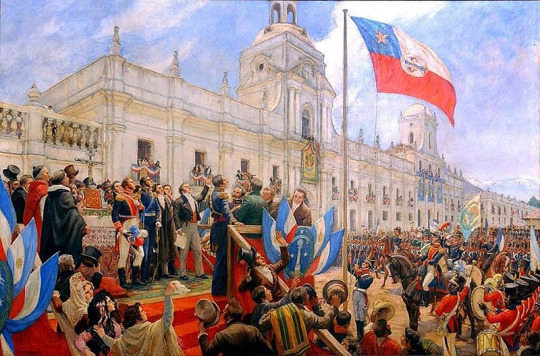

AUTORES DE MEMORIA CHILENA
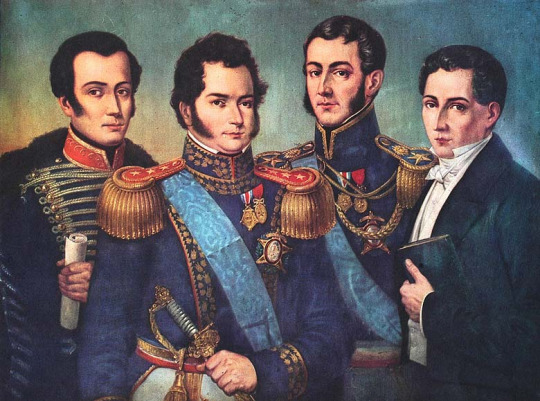
¿COMO ES LA HISTORIA DE CHILE?
La historia de Chile se divide generalmente en doce periodos que abarcan desde el comienzo del poblamiento humano del territorio actual de Chile, hasta la actualidad.1
El periodo prehispánico corresponde a la historia de las diferentes etnias amerindias presentes en el territorio, extendiéndose desde alrededor del año 14 800 a. C. hasta la llegada de los españoles. A partir de 1492, se iniciaron las exploraciones europeas en el continente americano. En 1520 Fernando de Magallanes y su expedición fueron los primeros europeos en llegar a Chile por el sur a través del estrecho que hoy lleva su nombre, y en 1536 Diego de Almagro comandó una expedición hasta el valle del Aconcagua y el norte del actual Chile.
El tercer periodo corresponde a la conquista hispana, que se extendió entre 1536 y 1598 con la guerra de Arauco, durante la cual los habitantes hispanos fueron atacados constantemente por los mapuche rebeldes. El período hispánico cubre algo más de dos siglos, entre 1598 y 1808, lapso marcado por el establecimiento de las instituciones reales.
El denominado periodo de la Independencia se desarrolló desde que Napoleón Bonaparte capturó al rey español de ese entonces Fernando VII en 1808 hasta la abdicación de Bernardo O'Higgins en 1823. Estuvo marcado por la guerra entre patriotas y realistas. La Patria Vieja, iniciada con un cabildo abierto el 18 de septiembre de 1810, llegó a su fin con la derrota patriota en la batalla de Rancagua en 1814, que dio inicio al periodo conocido como reconquista. Los patriotas sobrevivientes huyeron a la ciudad argentina de Mendoza, donde se aliaron con el gobernador independentista de la provincia, el general José de San Martín, y formaron el «Ejército Libertador de los Andes». La reconquista terminó en 1817 con la batalla de Chacabuco, en la cual el «ejército Libertador» derrotó al ejército realista. El triunfo militar definitivo se dio el año siguiente en la batalla de Maipú.
Entre 1831 y 1861, tuvo lugar el periodo de la república conservadora. Estuvo marcado por la puesta en vigor de la Constitución de 1833, establecida por Diego Portales, con un gobierno fuerte y centralizador. A pesar de algunos intentos de subversión, se mantuvo la estabilidad institucional y el país conoció la prosperidad económica.
2 notes
·
View notes
Text
LITERATURA CONTEMPORANEA CHILENA
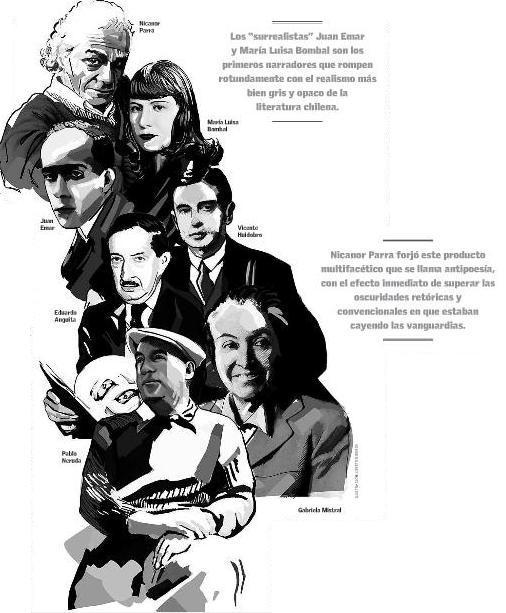
La literatura de Chile hace mención al conjunto de producciones literarias creadas por escritores originarios de ese país; ha sido producida habitualmente en español, aunque existen también autores, principalmente poetas, que utilizan otros idiomas, en particular el mapudungun. Especialmente en el ámbito de la poesía, cuenta con varios escritores de renombre, como Vicente Huidobro, Enrique Lihn, Gabriela Mistral, Pablo Neruda, Nicanor Parra, Pablo de Rokha, Gonzalo Rojas, Jorge Teillier y Raúl Zurita, entre otros. En el campo de la narrativa, destacan también Isabel Allende, Roberto Bolaño, María Luisa Bombal, José Donoso, Jorge Edwards, Pedro Lemebel, Antonio Skármeta, entre otros.El romanticismo en Chile, conforme al análisis del crítico literario Cedomil Goic, puede clasificarse en tres generaciones literarias: la de 1837, 1852 y 1867.
La de 1837, denominada también generación costumbrista, se caracterizó por el desarrollo de un costumbrismo con especial énfasis en lo pintoresco y lo realista, abordándolos desde un punto de vista crítico y satírico En esta generación destacaron Mercedes Marín del Solar, Rosario Orrego, Vicente Pérez Rosales y José Joaquín Vallejo.
La de 1852 o generación romántico-social tuvo una postura más radical a la visión liberal que la generación anterior, presentando el pasado como ejemplo de rectificación del presente. En esta generación sobresalieron José Victorino Lastarria, Salvador Sanfuentes, Martín Palma, Eusebio Lillo, Guillermo Matta y Guillermo Blest Gana. En las décadas de 1950 y 1960, los autores chilenos volvieron a incursionar en la novela histórica. Y ya a partir de 1970, volcaron su mirada hacia los "momentos fundacionales, es decir, las etapas del descubrimiento, Conquista y, en general, el período colonial, lo que conlleva la relectura de los textos canónicos que dan cuenta de dichos proceso históricos, especialmente las crónicas, las relaciones, las cartas del conquistador, que constituyen los pretextos que serán deconstruidos por el discurso alternativo del creador literario" (Eddie Morales Piña. "Brevísima relación de la nueva novela histórica en Chile", Notas Históricas. En este nuevo renacer, la novela histórica basa su contenido en copiosa documentación. Asimismo, los autores chilenos leen disciplinadamente no sólo los libros de Benjamín Vicuña Mackenna, Francisco Encina y Jaime Eyzaguirre, entre otros, sino que también llevan a cabo una revisión completa de cartas, crónicas, diarios íntimos y de viajes.
Aún cuando surgen numerosas publicaciones, en Chile la tendencia no es tan acusada como en otros países de Latinoamérica. Según Mentor Seymour, "este fenómeno puede explicarse por la mayor preocupación de los novelistas chilenos contemporáneos por el pasado inmediato, o sea el golpe militar contra el gobierno de Allende en 1973, la dictadura de Pinochet y las experiencias en el exilio de varios novelistas" (La nueva novela histórica de la América Latina, 1979-1992. México: Fondo de Cultura Económica, 1993.
ROMATICISMO:
El romanticismo en Chile fue un fenómeno amplio, que formó parte de un contexto latinoamericano mayor, en el que predominó la idea de la construcción de la nación con un carácter utópico vinculado al liberalismo político. En el caso de las producciones escritas en Chile, el romanticismo se vinculó en su origen a la llegada de intelectuales argentinos hacia 1840 y al Movimiento Literario de 1842.
Durante la década de 1840, surgió en Chile una producción intelectual comprometida con la idea de la identidad nacional. Este fenómeno ha sido relacionado, por un lado, con el Discurso de incorporación a la Sociedad Literaria de José Victorino Lastarria (1817-1888), en el que abogó por la necesidad de una literatura de carácter local y, por otro, con el eco de ese llamado recogido por los intelectuales del Movimiento Literario de 1842.
Para Norberto Pinilla (1902-1946), la "escuela romántica" nació en Chile vinculada a este "despertar" de las letras nacionales, en particular, a partir de la ocurrencia de dos debates sobre "cultura filológica y literaria" que se vivieron durante esos años: la controversia filológica, intercambio de artículos en la prensa en los que se discutió respecto al uso de la lengua en América; y la polémica del romanticismo (Pinilla, Norberto. Panorama y significación del Movimiento literario de 1842.
REALISMO:
El realismo literario es una corriente estética que supuso una ruptura con el romanticismo, tanto en los aspectos ideológicos como en los formales, durante la segunda mitad del siglo xix. Se extendió también a las artes plásticas en Latinoamérica, lugar donde hasta entonces no había gran proliferación en este arte. Este se caracterizaba por una extensa y muy detallada información de los personajes, paisajes, escenas, etc. De esta forma, podían ser imaginados con mayor facilidad.
youtube
6 notes
·
View notes
Text
Latinoamérica Viva: Voces literarias que reflejan la diversidad y riqueza cultural de la región en la FIL Guadalajara
La literatura de América Latina ha dejado una huella indeleble en el panorama mundial, no solo por el uso de las lenguas romances, sino por la vasta diversidad de temas y géneros que la caracterizan. Nombres como Gabriel García Márquez, Jorge Luis Borges, Gabriela Mistral y Mario Vargas Llosa han emergido de esta región, que sigue siendo un semillero de grandes talentos literarios. Este legado…
1 note
·
View note